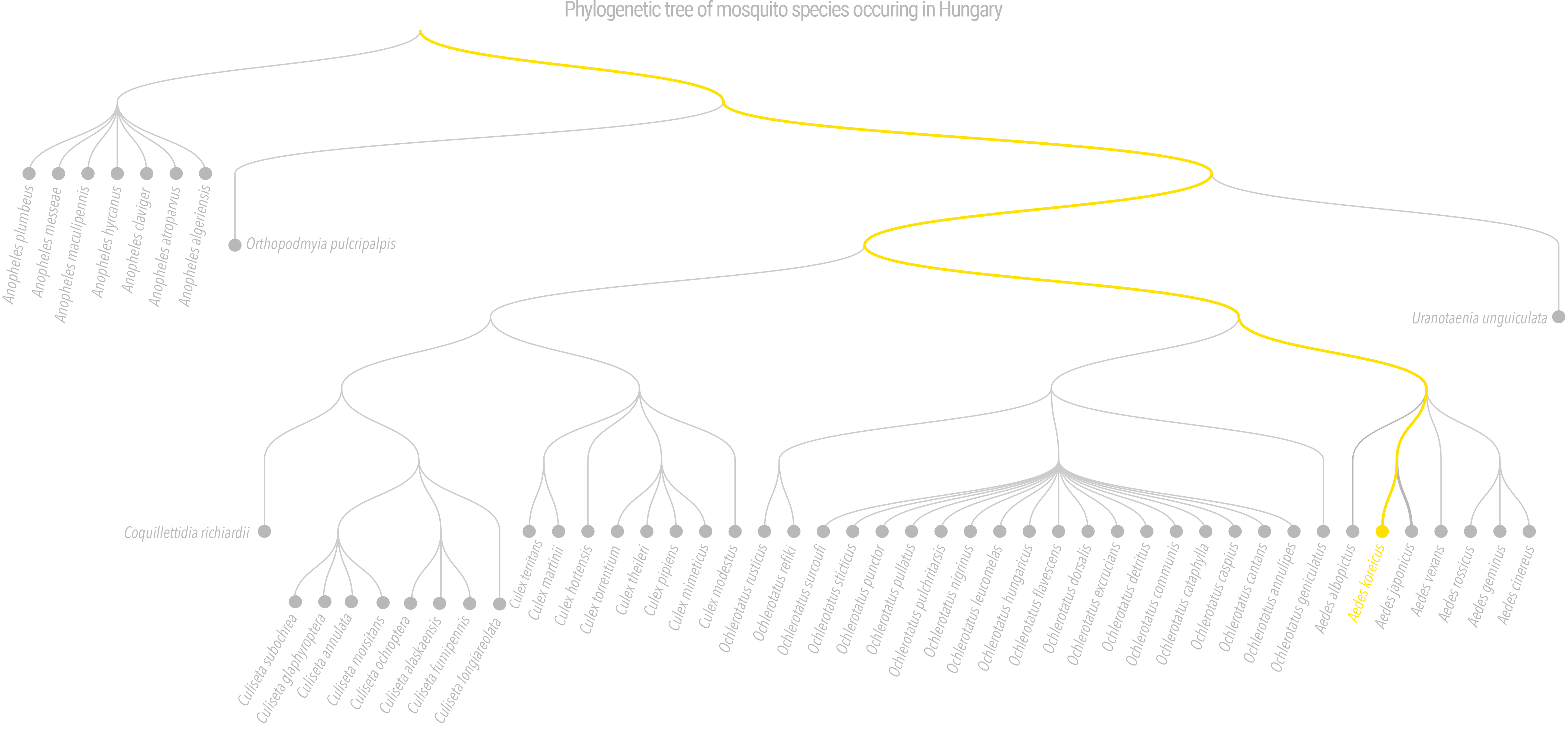KOREAN MOSQUITO
KOREAN
MOSQUITO
AEDES KOREICUS
MORPHOLOGY
The body of the Korean mosquito is a dark brown color, and just like in the case of the tiger mosquito, the legs bear white bands. On the back of the thorax, there are several golden or yellowish stripes, thus the overall appearance of this mosquito makes it very similar to the Asian bush mosquito, since both have several golden lines on the thorax, although the design is slightly different, and the number of the white stripes on the legs (the last segment has a white stripe that gives it a more striped appearance than Aedes japonicus) marks the slight difference between these two species. The eggs are similar too, but somewhat longer and narrower than those of the tiger mosquito.

ORIGIN AND DISTRIBUTION RANGE
The Korean mosquito is endemic to eastern Asia: its original range includes Japan, South Korea, north-eastern China, and the eastern territories of Russia. Its first European report came from Belgium in 2008 where it formed an established population soon after. Later it was detected in many other European countries as well (including Hungary) as its range continued to expand: Italy (2011), Switzerland, Slovenia, Black sea cost of Russia (2013), Germany (2016), and the Crimean peninsula (2018). The first Hungarian report came from Baranya county in 2016 but since then it was established stable populations and emerged in other regions of the country as well, currently, its Hungarian range includes Baranya and Tolna counties, the capital citywith the metropolitan area.
ECOLOGY
Like many other Aedes species, the Korean mosquito can overcome winters in the form of desiccation-resistant egg, that remain in diapause until environmental conditions are again favorable to the species. The adults can be active from spring until late autum (even at end of October), being more abundant during the summer months. Very little is known of the environmental needs and activity of this species, but it is clear that, unlike our native mosquitos, Aedes koreicus is known to bite both day and night, although it appears to be more active during the day. It seems more resistant to cold and drought than the Asian bush mosquito, and also it thrives better in urban environments. Populations living in cities, mainly feed on humans but can also attack other warm-blooded animals. Like other container-breeding Aedes species, in natural habitats the females searche for dark, water-filled rock or tree cavities to lay eggs, however, in urbanized areas, all kind of artificial containers can be used as breeding sites: garden ponds, construction debris, garbage and tires filled with rainwater are all suitable for the development of the eggs and larvae.
TRANSMISSION OF PATHOGENS
The role of this species in transmission of diseases is not yet fully revealed. In its native Asian range, it is a potential vector for the Japanese encephalitis virus and the Brugia malayi filarial parasite which is associated with the Lymphatic filariasis disease, but fortunately Europe is not yet threatened by these tropical pathogens. Laboratory experiments have been demonstrated that it can potentially transmit further pathogens such as Dirofilaria immitis and D. repens (causes of heartworm disease and subcutaneous dirofilariosis in dogs) which pose a significant veterinary risk in Europe (in Hungary as well), and also the Chikungunya virus which already caused several epidemics in Italy and France.
HOW TO DISTINGUISH IT FROM OTHER INVASIVE SPECIES?
At first glance, the Korean mosquito’s appearance closely resembles the Asian bush mosquito, but there are some differences that can be used to distinguish these species: although both have several golden lines on the dorsal side of the thorax, the two secondary stripes on both sides of the central one are shorter on the Korean mosquito than those found on the Asian bush mosquito (while the tiger mosquito has only a single thorax strip which is always bright white, not yellow). The third legs are also telling: in the case of the Korean mosquito, there is a white band on the last tarsomere as well, adding more contrast to the appearance of this species.